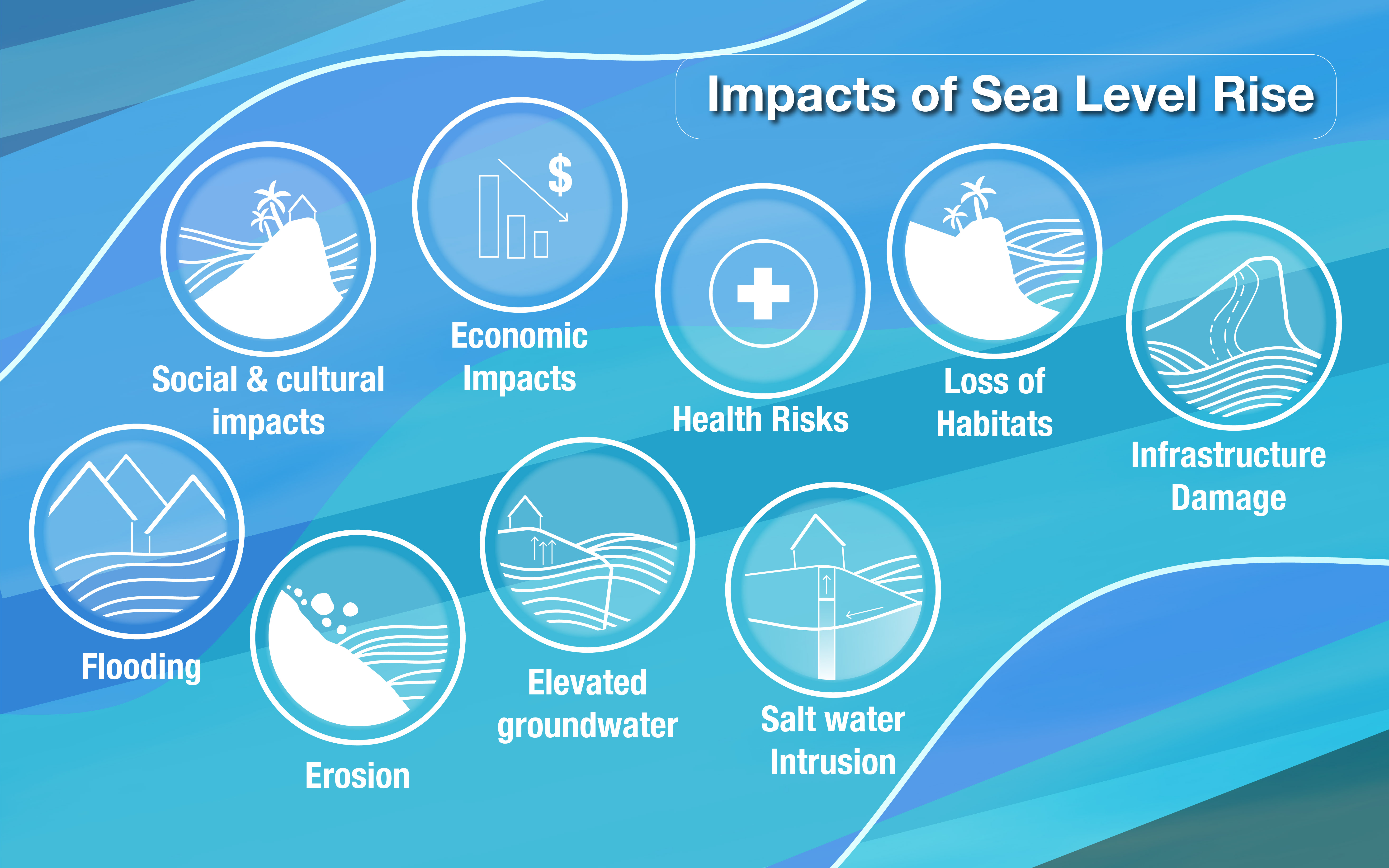Sea Level Rise Worsens FloodingSea Level Rise is Making Flooding Worse
Sea level rise varies from place to place, and so do its impacts. As sea levels rise, many coastal places will experience more frequent and widespread flooding during high tides and storms over the next 30 years and beyond. This is because sea level rise adds height on top of already existing sea levels and the ups-and-downs that have occurred naturally along coastlines for a long time. The way sea level rise will initially be felt in many locations is as more frequent and severe episodic flooding that will come and go with passing tides and storms. For example with 10 centimeters (4 inches) of sea level rise, if a water level used to reach 30 centimeters (12 inches) high during high tide or a storm, that same event would now reach 40 centimeters (16 inches) or more. And that extra height trigger flooding when it didn't in the past or can push a flooding event further inland, causing greater damage.
Flood Thresholds and the Challenges of Global Determination
Flood thresholds represent critical water levels at which flooding begins to cause damage to infrastructure, disrupt daily activities, or pose hazards to safety and property. These thresholds are crucial for understanding and predicting when flooding events may occur and for developing appropriate response strategies. However, determining flood thresholds on a global scale presents several complexities.
1. Local Variability: Flood thresholds are highly dependent on local conditions, such as coastal topography, land use, and the presence of protective structures like levees or seawalls. In some regions, even minor increases in sea level can cause significant flooding due to low-lying geography, whereas other areas may tolerate higher water levels before flooding becomes an issue. This variability complicates the process of establishing universal flood thresholds and necessitates detailed, region-specific assessments.
2. Data Limitations: In many parts of the world, especially in remote or developing regions, the lack of high-quality tide gauge data and detailed topographic surveys hinders accurate determination of flood thresholds. Satellite observations provide some global coverage, but they may lack the precision needed to identify fine-scale differences in land elevation and coastal vulnerability.
3. Changing Baselines: Sea level rise and coastal subsidence are continuously altering the baselines from which flood thresholds are measured. As sea levels rise, areas that were once considered safe from flooding may become increasingly at risk. This dynamic nature of flood thresholds complicates long-term planning and risk assessment, requiring continuous updates and monitoring.
To find out more about changes in flooding related to sea level rise in your country, go to the Sea Level Explorer.
Impacts to Coastal CommunitiesSea Level Rise Also Impacts Coastal Communities’ Land, Infrastructure, and Economies

In addition to flooding, there are a variety of other impacts from sea level rise coastal communities are already starting to experience. Many of these impacts are happening at the same time, leading to extra stress on communities.
At the shoreline, the added height from sea level rise can speed up erosion. Erosion can impact natural habitats and lead to the loss of land and property. When combined with flooding, erosion can damage roads, bridges, sewage systems, power plants, and other key infrastructure for the community. This can lead to health risks through the spread of waterborne diseases.
Below ground, saltwater can seep into freshwater aquifers as sea levels rise, known as saltwater intrusion. When saltwater mixes with the fresh groundwater, the water becomes unusable for drinking and agriculture. Furthermore, coastal and marine ecosystems that support industries and provide natural storm protection, resources and ways of life are all at risk of changing or degrading due to sea level rise.
Sea level rise impacts can also lead to economic hardships for a community. In particular, communities that rely on coastal tourism, fisheries, and shipping may feel the impacts most deeply.
However, actions are being taken in many coastal communities to help plan for and address these impacts.
Dive Deeper: The many factors that influence the impacts of sea level rise on coastal communities.